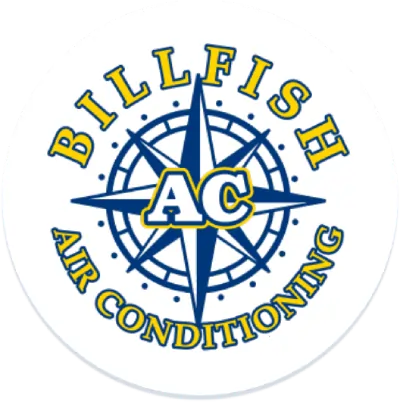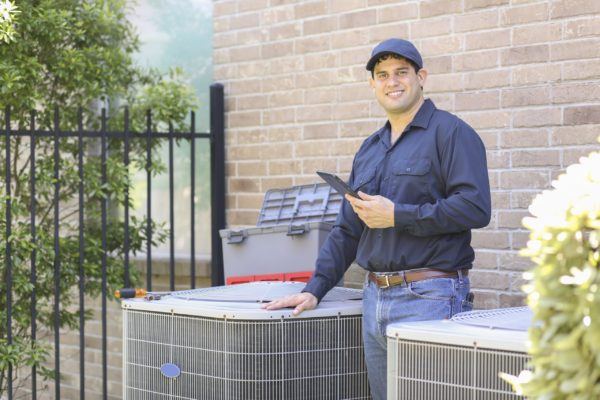As HVAC professionals servicing Stuart, FL, and the surrounding areas, we receive many calls about heating and cooling units. Complaints include unusual noises, thermostat malfunctions, and heat losses to expensive utility bills. However, the most distressing call is when the HVAC unit leaks indoors.
It is perfectly okay for the HVAC unit to drain some water outside. Nevertheless, observing water puddles in other areas requires immediate attention. There are many causes for the occurrence with varied consequences based on the magnitude of the leak. What starts as a minimal inconvenience can soon damage the walls, ceiling, and your HVAC components.
How Can I Tell My AC Is Leaking?
During our routine maintenance in homes around Stuart, we encounter homeowners who have no idea that they have leaking HVAC units. For this reason, be on the lookout for large water puddles in the basement or around the unit. You may also notice a distinctive mold smell, sludges on the wall, or a leaking ceiling in the worst-case scenarios.
Most older AC models do not have sensors that automatically detect a water leak. Nevertheless, our HVAC professionals at [company_name] have a solution to this problem by installing a switch pan. When water on the drain pan rises above the set level, it activates the switch, which shuts off the AC. This innovation will help you save hundreds of dollars in repairs and mold removal. It is vital to rely on an HVAC technician to do the installation because a tilt on the pan or improper installation will not trigger the switch.
There are many other reasons why your AC could be leaking, and identification of the root cause helps in immediate correction. Here is our list of possible causes:
Clogged Condensate Drain
A background in how the de-humidification process happens on the AC unit will go a long way in explaining the role of the condensate drain. Typically, your HVAC unit helps regulate the humidity levels in your home. Warm moist air moves over the chilled evaporator, converting the vapor into water. The water drips into the drain pan, which is directed to the drain for removal.
Blocked condensate drains are the most common source of leaks in central air conditioners. The condensate drain on your AC unit is supposed to let excess condensation run off to the outside. But if the drain is blocked, the condensation can back up and leak out of the AC unit. Common culprits for blockage are debris or dirt lodged in the drain.
A successful way to prevent clogging is to regularly clean the condensate drain on your AC unit. Beware of harsh chemicals and bleaches that may lead to corrosion and adversely affect your indoor air quality. You can rely on [company_name] for thorough cleaning without compromising the condition of your drain or the health of your family.
Disconnection of the Drain Line
Prolonged use of the HVAC unit can cause disconnection of the drain line due to consistent vibrations. Another common cause for this anomaly is poor craftmanship during installation or routine maintenance.
It is easy to notice a drain line disconnection because of the large pool of water in unwanted places. If you notice a drain line disconnection, schedule a repair service. Our professionals ensure the drain line fits nicely onto the drain sockets to avoid future occurrences of this problem.
Malfunctioned Condensate Pump
The HVAC unit relies on gravity to dispel condensate via the drain. However, gravity alone is insufficient to remove all the water, especially in lower areas that require a pump, such as the basement.
Typically, condensate not removed by gravity collects in a reservoir. The tank has a float switch that activates the electric motor once triggered. As more water drips, it fills the tank, pushing the float switch. The pump then starts pumping water from the tank and dispels it outside or to the utility sink.
A faulty pump means it is impossible to trigger the float switch, which causes water to overflow from the tank to the basement. The genesis of the problem includes the accumulation of debris on the float switch, damaged motor, and blockage on the hose.
Low Refrigerant Levels
The refrigerant is a crucial chemical that runs inside the evaporator coil. The chemical is responsible for heat exchanges within the HVAC unit, which helps to cool your home during summer. Typically, the refrigerant never dissipates during operations. Instead, it changes form from gas to liquid and vice-versa.
A typical signal of a low refrigerant level is the icing of the evaporator coils. When this scenario occurs, the heat exchanges that usually occur between air and the refrigerant become impossible. No matter how long the HVAC operates, your home will remain warm. Unfortunately, waiting for the ice to melt or scrape off the ice does not wave off the problem. You need to contact an HVAC technician to rectify the issue.
Leakage is another common origin of low refrigerant levels. The leak mainly occurs on the connectors; otherwise, there could be damage to the pipes. You can detect a leakage if you hear a bubbling or hissing sound.
If you notice low refrigerant levels, contact a professional immediately. Our technicians will quickly assess the root cause and advise whether you need a refill, repair, or a new refrigerant.
Dirty Air Filters
We always advise residents of Stuart to replace their air filters as often as possible with high-efficiency particulate air (HEPA) filters. The recommended standard is to change the filters at least once every 90 days. However, if you are a heavy smoker, have pets, or use scented candles, you need to change your filter every 30 days. HEPA filters will not only trap particles, hair, and pet dander but also trap the tiniest allergens.
Dirty filters obstruct normal airflow, which is paramount to the proper functioning of the evaporator. Little or no air circulation makes the water precipitate on the coil to freeze into ice. The ice covers the entire coil hindering normal function and preventing the cooling of your home. Upon melting, the water overflows into the drip tray. This excess water can seep into your home.
It is good practice to schedule air filter changes as often as possible. If you have a busy routine, it will help to book regular maintenance appointments to avoid such inconveniences.
Broken Drain Pan
The drain pan plays a crucial role in collecting the condensate beneath the evaporator coil. Typically, there are three main types of materials that make the drip tray:
- Galvanized steel: Widely used, lasting about 15 years
- Stainless steel: Last longer than galvanized steel
- Polymer: Least popular but effective in tackling microbes
The drain pan is subject to wear and tear or damage over time. When rust forms on the steel, it destroys the pan, leaving holes. Water seeps through the patches formed into your home. If the polymer breaks, the result is the same. Your home may flood, and your valuables will be destroyed.
While these are the common reasons for water leaks from the AC units, the list is not exhaustive. Other causes include improper installations, cold weather, and dirty or broken coils. Contact [company_name] to repair your AC leaks. We also offer HVAC installations, repairs, and ductwork services for residents in Stuart, FL.


